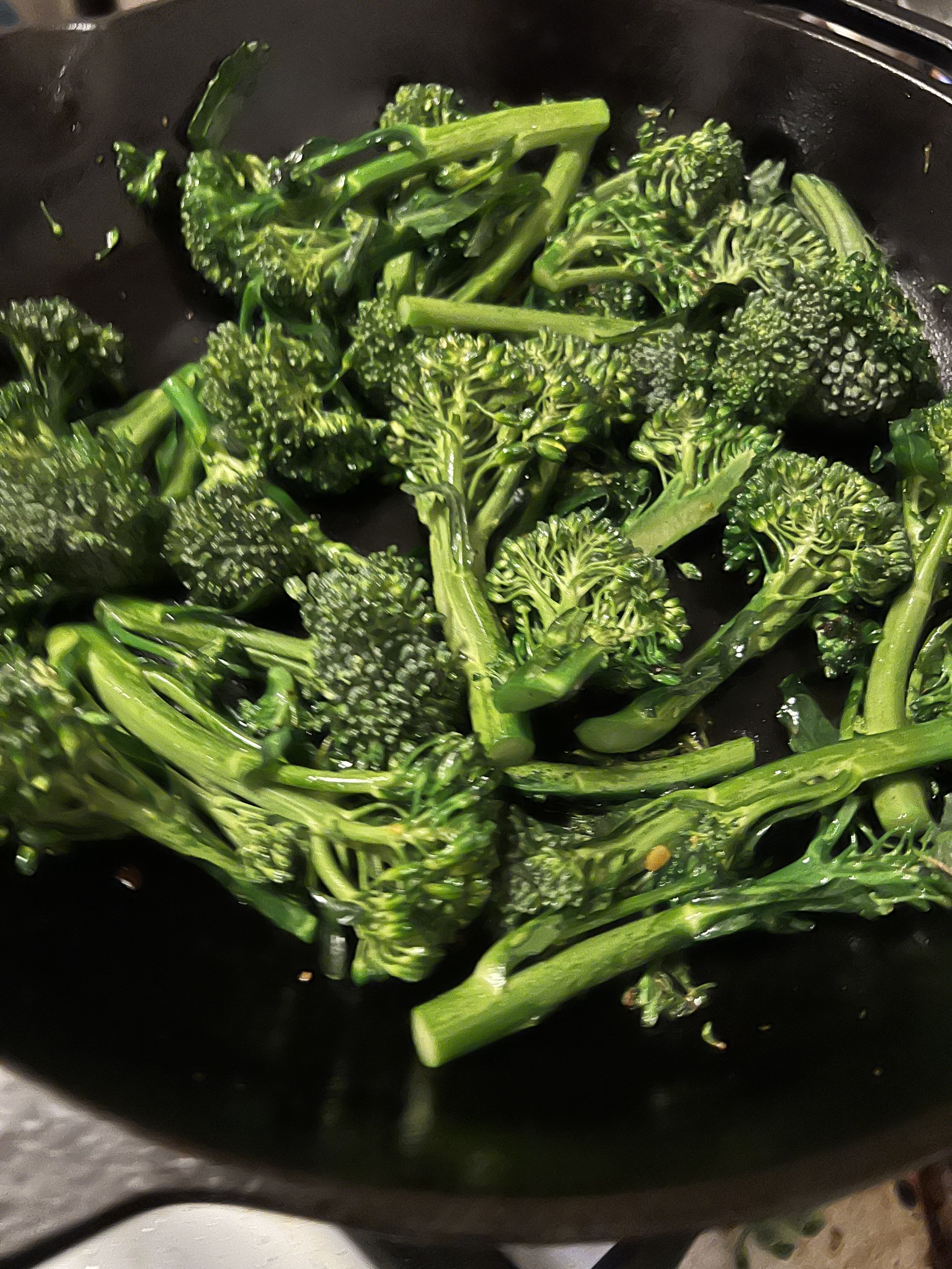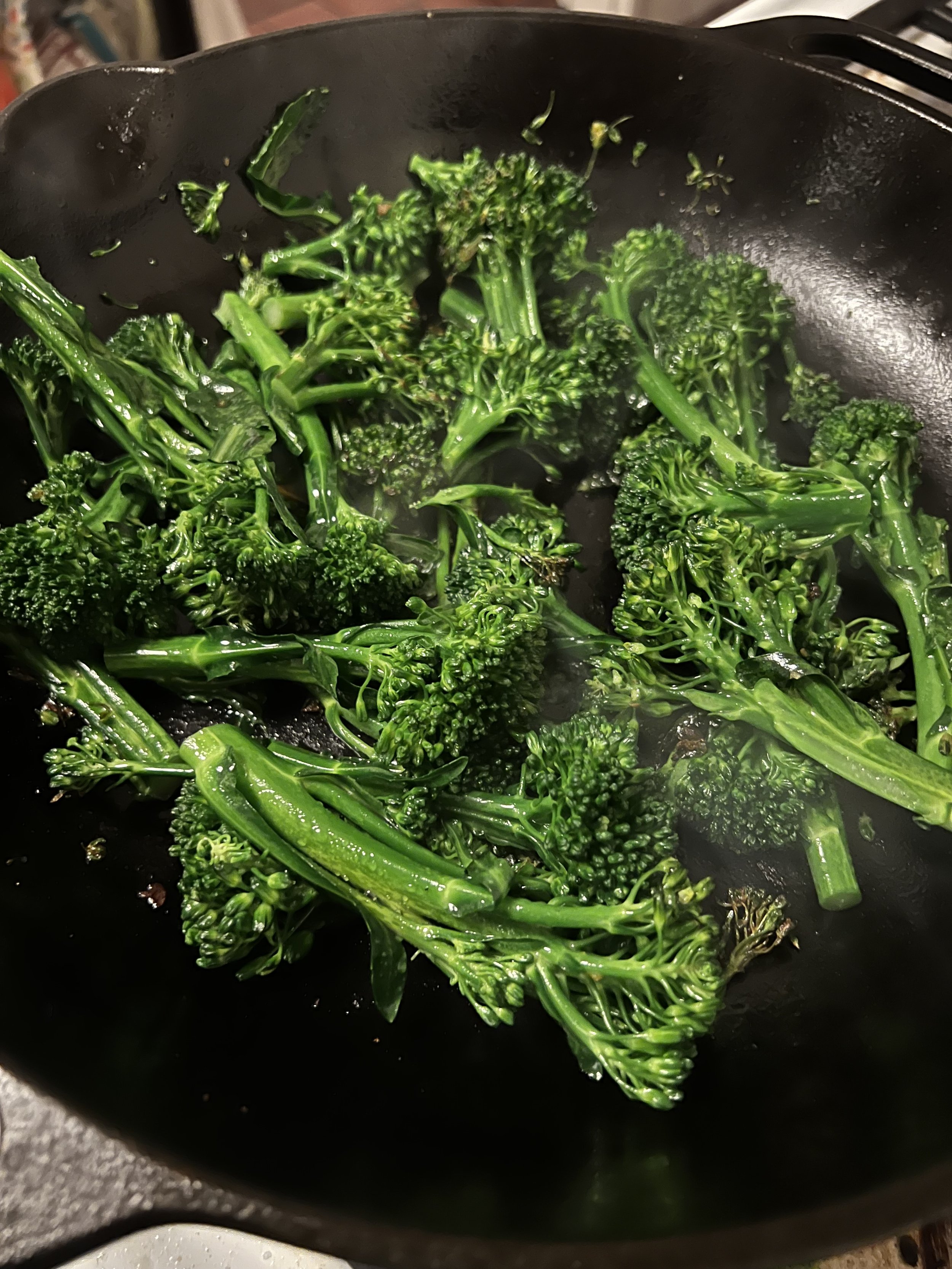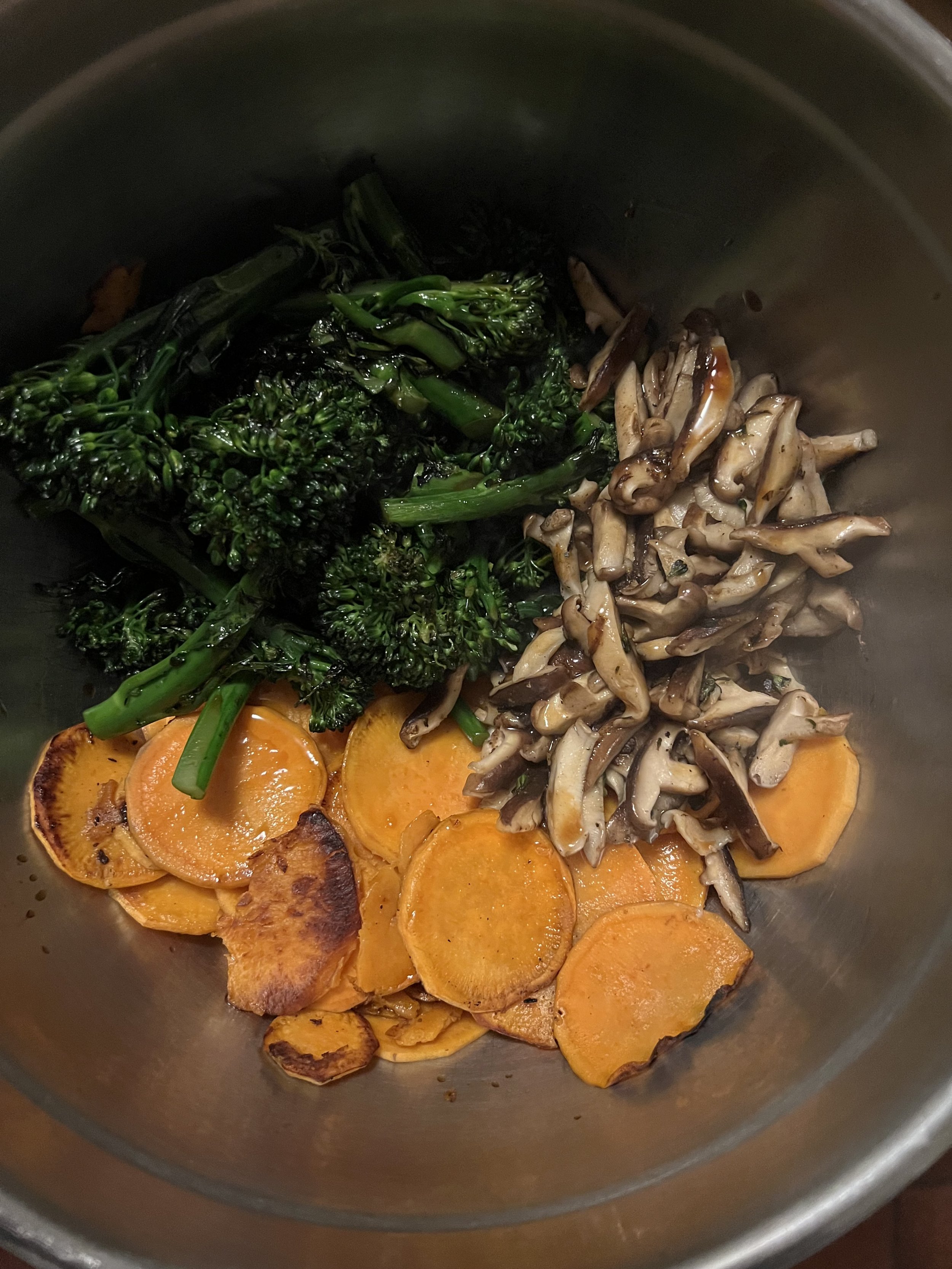Bibimbap
(Serves 3)
This dish is a treat to behold as much as it is to eat. Full of complex flavor, this vegetarian take on a classic Korean dish is heaven itself on a cold night.
Primarily a rice dish, bibimbap can be made up of anything you want. This version is inspired by Meera Sodha’s version from her cookbook East, one of the best vegetarian cookbooks out there.
**Adapted from Meera Sodha’s ‘Sweet Potato and Broccolini Bibimbap’ from her Cookbook East.
Ways to make this your own
Dolsot bowls
The bowls you see above are traditional Korean ceramic stone bowls used in cooking. They can be heated up to high temperatures, keeping your food as warm as possible while you enjoy it. If you happen to have some, they will go great with this dish. If not, you can still use a traditional bowl or plate.
Bibimbap contents
Bibimbap is a great dish to make if you have vegetables that are right on the edge of going bad. Feel free to add or swap out the vegetables I’ve included here.
Egg or no egg?
Traditionally, an egg is added at the end. I’ve tried it with and without this egg, and both versions taste amazing. If eggs aren’t your thing, feel free to leave out.
Ingredients:
Gochujang sauce:
4 1/2 tbsp gochujang sauce
3 tbsp toasted sesame oil
1 1/2 tbsp soy sauce
1 1/2 tbsp agave syrup
1 1/2 tbsp rice vinegar
Rice:
1 1/4 cups short or medium-grain rice, rinsed
Bibimbap:
Vegetable oil
2 medium-sized sweet potatoes, slicked 1/8 inch thick
2 lbs broccolini, or baby broccoli
4oz Shiitake mushrooms
Sprinkle of kosher salt
2 tbsp soy sauce
2 tbsp sesame oil
3 eggs
Directions:
**If you’re using dolsot bowls: Place the bowls in the oven and heat the oven to 450 degrees. (You want to have the bowls in the oven while the oven is heating.) Once the oven reaches 450 degrees, you can turn off the heat and leave the bowls in there until you’re ready to use them. If there’s a lot more time until you’re ready to serve, you can leave the oven on for a few minutes longer, then turn the oven off. Be careful when using these! They are made to be very hot, and should never be handled with bare hands!
Gather all of your ingredients for the gochujang sauce, and mix thoroughly in a small bowl. Set aside for later. Have all your vegetables chopped and ready. This will make it much easier when you begin cooking.
Rinse your rice through a sieve several times, until the liquid comes out clear. Heat 1 1/2 cups of water over high heat. Add a teaspoon of salt to the water. Once it’s boiling, add the rice, cover, reduce to a simmer, and let sit until all the liquid is absorbed, about 15 - 20 minutes.
Next, heat a tbsp of vegetable oil in a skillet over medium-high heat. Once simmering, add the sweet potato. Try to get as many of them in a single layer as possible. Leave to cook without touching them for 3 minutes. Then start to stir them. Continue to cook until they’re evenly browned and cooked through (another 5 minutes). Once finished, remove from the pan to a bowl.
Next, start your broccoli. Heat another tbsp of vegetable oil in the same pan you used for the sweet potato. Once shimmering, add your broccoli. (Careful: it might sputter). Let cook for a couple of minutes. Then add two tbsp of water to the pan, quickly place a cover over the broccoli, and let cook for another three minutes. Remove the cover, and cook for two more minutes, or until the broccoli starts to brown.
When they’re done cooking, remove from the pan and add to the bowl with the sweet potato.



Add your shiitake mushrooms to the now empty pan. Sprinkle a little kosher salt (just enough to make the mushrooms release their juices). Cook, stirring occasionally so the mushrooms don’t stick to the bottom of the pan. Let cook until they’re fully softened, about 2 -3 minutes. Remove and add to the bowl with the sweet potato and broccoli.
Once all your veggies are in the bowl, drizzle them with the soy sauce and sesame oil.
If you’re using your dolsot bowls, now would be a good time to take them out of the oven. Place them on a tray or heating pad, as they’ll be quite hot. You can absolutely use regular bowls for this.
Place a heaping spoonful of rice at the center of each bowl. Surround with your veggies.



For the final touches, heat one last tbsp of oil in your pan, and crack open three eggs. Cook until they’re just done (about 2 -3 minutes).
Place on top of the rice. Swirl some sauce around everything, and serve with kimchi or another banchan of your choosing!









